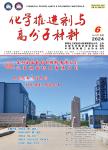Estimation of Time to Maximum Rate Under Adiabatic Conditions(TMR_(ad)) Using Kinetic Parameters Derived From DSC-Investigation of Thermal Behavior of 3-Methyl-4-Nitrophenol
Estimation of Time to Maximum Rate Under Adiabatic Conditions(TMR_(ad)) Using Kinetic Parameters Derived From DSC-Investigation of Thermal Behavior of 3-Methyl-4-Nitrophenol作者机构:AKTS AGTechnoArk 13960 SidersSwitzerland ArmasuisseScience and Technology Centre3602 ThunSwitzerland Ciba Schweizerhalle AGP.O.Box4002 BaselSwitzerland DSM Nutritional Products Ltd.Safety laboratory4334 SisselnSwitzerland F.Hoffmann-La Roche LtdSafety laboratories4070 BaselSwitzerland Lonza AGSafety Laboratory VispRottenstr.63930 Visp Switzerland Novartis Pharma AGNovartis CampusWSJ-145.8.544002 BaselSwitzerland Syngenta Crop Protection Münchwilen AGWMU 3120.1.544333 MünchwilenSwitzerland Swiss Safety InstituteSchwarzwaldallee 215WRO-1055.5.024002 BaselSwitzerland
出 版 物:《化学推进剂与高分子材料》 (Chemical Propellants & Polymeric Materials)
年 卷 期:2011年第9卷第1期
页 面:84-96页
学科分类:082604[工学-军事化学与烟火技术] 08[工学] 0826[工学-兵器科学与技术]
主 题:adiabatic condition methyl nitrophenol DSC Ф-factor kinetics thermal runaway,TMR
摘 要:Kinetic parameters of the decomposition of hazardous chemicals can be applied for the estimation of their thermal behavior under any temperature *** paper describes the application of the advanced kinetic approach for the determination of the thermal behavior also under adiabatic conditions occurring *** batch reactors in case of cooling *** kinetics of the decomposition of different samples(different manufacturers and batches) of 3-methyl-4-nitrophenol were investigated by conventional DSC in non-isothermal(few heating rates varying from 0.25 to 8.0K/min) and isothermal(range of 200~260℃) *** kinetic parameters obtained with AKTS-Thermokinetics Software were applied for calculating reaction rate and progress under different heating rates and temperatures and verified by comparing simulated and experimental *** application of the heat balance to compare the amount of heat generated during reaction and its removal from the system,the knowledge of reaction rate at any temperature profiles allowed the determination of the temperature increase due to the self-heating in adiabatic and pseudo-adiabatic *** advanced kinetic approach allowed simulation the course of the Heat-Wait-Search(HWS) mode of operation of adiabatic *** thermal safety diagram depicting dependence of Time to Maximum Rate(TMR) on the initial temperature was calculated and compared with the results of HWS experiments carried out in the system with Ф-factor amounting to *** influence of the Ф-factor and reaction progress reached at the end of the HWS monitoring on the TMR is *** calculations clearly indicate that even very minor reaction progress reduces the TMRad of 24h characteristic for a sample with initial reaction progress amounting to *** estimation method can be verified by just one HWS-ARC,or by one correctly chosen ISO-ARC run of reasonable duration by knowing in advance the dependence of the TMR



